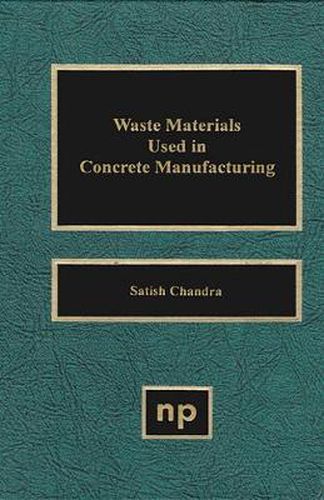Readings Newsletter
Become a Readings Member to make your shopping experience even easier.
Sign in or sign up for free!
You’re not far away from qualifying for FREE standard shipping within Australia
You’ve qualified for FREE standard shipping within Australia
The cart is loading…






One of the most critical problems we are facing today is acid rain. One of the main causes is the burning of fossil fuels, and as a result, sulfuric acid and carbon dioxide are added to the atmosphere. These gases have detrimental effects on building materials. Thus, there are two problems: (1) to decrease the gas emission, and (2) to produce construction materials more durable to the aggressive pollutant gases and acid rain. The environmental aspects involved in the production and use of cement, concrete and other building materials, are of growing importance. CO2 emissions are 0.8-1.3 ton/ton of cement production in dry process. SO2 emission is also very high, but is dependent upon the type of fuel used. Energy consumption is also very high at 100-150 KWT/ton of cement produced. It is costly to erect new cement plants. Substitution of waste materials will conserve dwindling resources, and will avoid the environmental and ecological damage caused by quarrying, and exploitation of the raw materials used for making cement. To some extent, it will help to solve the problems otherwise encountered in disposing of the wastes. Partial replacement of clinker or portland cement by slag, fly ash, silica fume and natural rock minerals illustrates these aspects. Partial replacement by natural materials that require little or no processing, such as pozzolans, calcined clays, etc., saves energy and decreases emission of gases. The output of waste materials suitable as cement replacement (slags, fly ashes, silica fumes, rice husk ash, etc.) is more than double that of cement production. These waste materials can partly be used, or processed, to produce materials suitable as aggregates or fillers in concrete. These can also be used as clinker raw materials, or processed into cementing systems. New grinding and mixing technology will make the use of these secondary materials simpler. Developments in chemical admixtures: superplasticizers; air entraining agents; etc., help in controlling production techniques, and in achieving the desired properties in concrete. Use of waste products is not only a partial solution to environmental and ecological problems, it significantly improves the microstructure, and consequently the durability properties of concrete, which are difficult to achieve by the use of pure portland cement. The aim is not only to make the cements and concrete less expensive, but to provide a blend of tailored properties of waste materials and portland cements suitable for specified purposes. This requires a better understanding of chemistry, and materials science. There is an increasing demand for better understanding of material properties, as well as better control of the microstructure developing in the construction material, to increase durability. The combination of different binders and modifiers to produce cheaper and more durable building materials will solve, to some extent, the ecological and environmental problems.
$9.00 standard shipping within Australia
FREE standard shipping within Australia for orders over $100.00
Express & International shipping calculated at checkout
One of the most critical problems we are facing today is acid rain. One of the main causes is the burning of fossil fuels, and as a result, sulfuric acid and carbon dioxide are added to the atmosphere. These gases have detrimental effects on building materials. Thus, there are two problems: (1) to decrease the gas emission, and (2) to produce construction materials more durable to the aggressive pollutant gases and acid rain. The environmental aspects involved in the production and use of cement, concrete and other building materials, are of growing importance. CO2 emissions are 0.8-1.3 ton/ton of cement production in dry process. SO2 emission is also very high, but is dependent upon the type of fuel used. Energy consumption is also very high at 100-150 KWT/ton of cement produced. It is costly to erect new cement plants. Substitution of waste materials will conserve dwindling resources, and will avoid the environmental and ecological damage caused by quarrying, and exploitation of the raw materials used for making cement. To some extent, it will help to solve the problems otherwise encountered in disposing of the wastes. Partial replacement of clinker or portland cement by slag, fly ash, silica fume and natural rock minerals illustrates these aspects. Partial replacement by natural materials that require little or no processing, such as pozzolans, calcined clays, etc., saves energy and decreases emission of gases. The output of waste materials suitable as cement replacement (slags, fly ashes, silica fumes, rice husk ash, etc.) is more than double that of cement production. These waste materials can partly be used, or processed, to produce materials suitable as aggregates or fillers in concrete. These can also be used as clinker raw materials, or processed into cementing systems. New grinding and mixing technology will make the use of these secondary materials simpler. Developments in chemical admixtures: superplasticizers; air entraining agents; etc., help in controlling production techniques, and in achieving the desired properties in concrete. Use of waste products is not only a partial solution to environmental and ecological problems, it significantly improves the microstructure, and consequently the durability properties of concrete, which are difficult to achieve by the use of pure portland cement. The aim is not only to make the cements and concrete less expensive, but to provide a blend of tailored properties of waste materials and portland cements suitable for specified purposes. This requires a better understanding of chemistry, and materials science. There is an increasing demand for better understanding of material properties, as well as better control of the microstructure developing in the construction material, to increase durability. The combination of different binders and modifiers to produce cheaper and more durable building materials will solve, to some extent, the ecological and environmental problems.